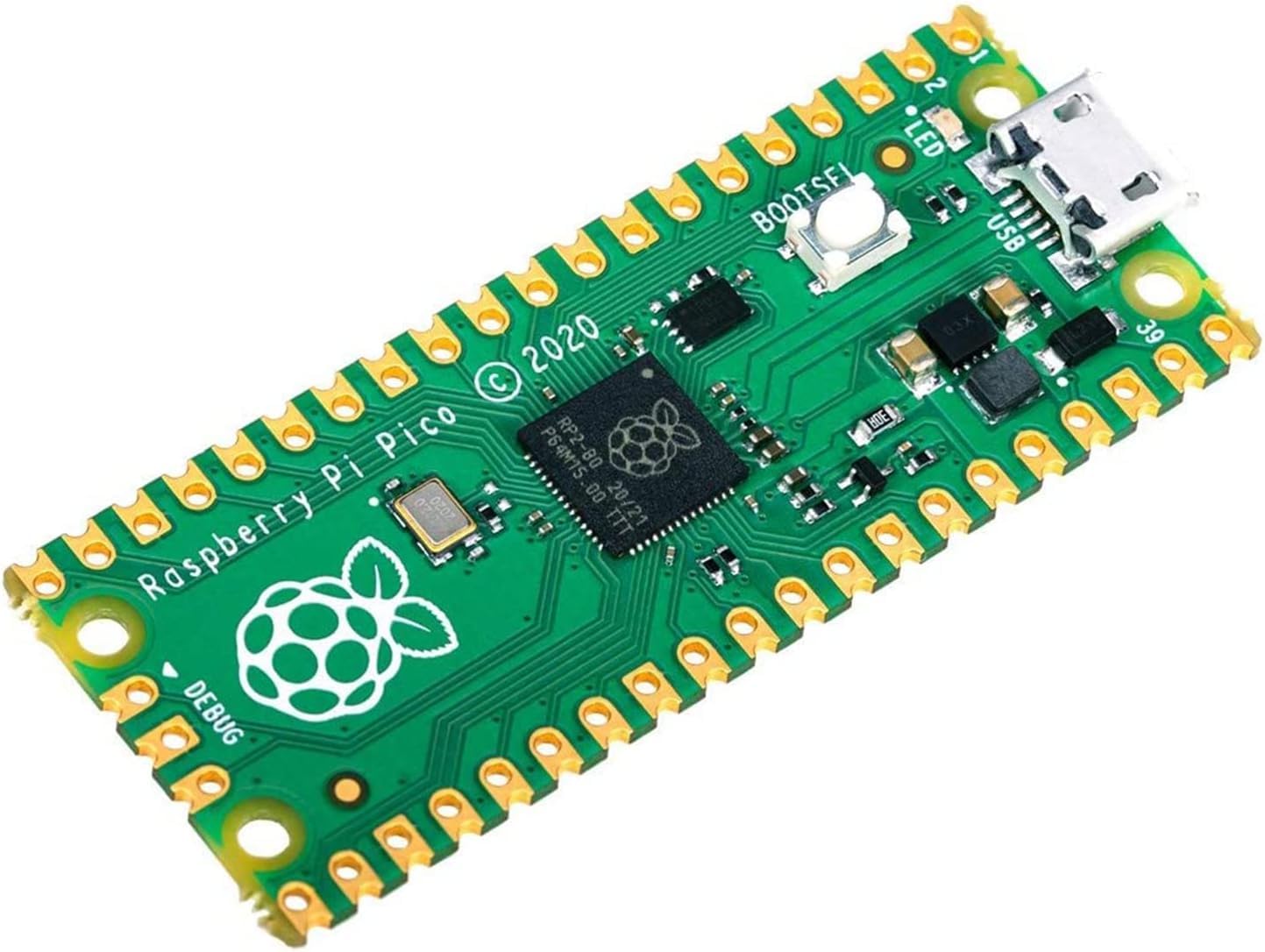Beginning
In the constantly evolving microcontroller scene, the Arduino Nano and Raspberry Pi Pico standing out for their flexible solutions.
This deep study goes beyond basic clock speeds, delving into technical parameters, performance tests, and applications in real life to identify which microcontroller is best suited for various project situations.
1. Understanding the Basics of the Arduino Nano and Raspberry Pi Pico
1. Arduino Nano
- Microcontroller: ATmega328P
- Clock Speed: 16 MHz
- Flash Memory: 32 KB
- RAM: 2 KB
- GPIO Pins: 22

2. Raspberry Pi Pico
- Microcontroller: RP2040
- Processor: Dual-core ARM Cortex-M0+ processors at 133 MHz
- Flash Memory: 2 MB
- RAM: 264 KB
- GPIO Pins: 26

2. Speed Fight between Arduino Nano and Raspberry Pi Pico
1. Clock Speed:
Raspberry Pi Pico: Raspberry Pi Pico has a better clock speed of 133 MHz.
Arduino Nano: The Arduino Nano works at a clock speed of 16 MHz.
2. Clock Speed Impact:
The Raspberry Pi Pico’s more powerful clock speed indicates that it may execute commands faster than the Arduino Nano.
3. Efficiency Considerations:
A microcontroller’s overall efficiency is not determined simply by its clock speed. The design of the system and code execution performance are important.
4. Design Impact:
Raspberry Pi Pico: The Raspberry Pi Pico’s design may effect efficiency, possibly improving code execution.
Arduino Nano: Despite its lower clock speed, the Arduino Nano’s architecture and ability to handle jobs may boost its efficiency.
5. Code Execution:
The effective rate of executing code has been identified as a major issue, meaning that simply comparing clock speeds may not show real performance because the speed at which the microcontroller executes instructions is also important.
6. Complete Speed Analysis:
A request for a thorough speed analysis maintains that elements other than clock speed, such as design and code execution, should be considered in order to provide a higher-quality general efficiency rating.
3. Performance Benchmarks
1. Mathematical Calculations:
- Run challenging mathematical operations on both systems to determine computing efficiency.
- Measure floating-point numbers and integer calculation ability to determine the way each microcontroller handles mathematical tasks.
2. Data processing:
- To better understand processing capabilities, evaluate speed using sorting algorithms, array manipulations, and data processing.
- To evaluate the overall processing efficiency, compare the performance speed of common data processing operations like sorting huge datasets or processing complicated data structures.
3. GPIO Handling:
- Analyze the way each performs input and output tasks with GPIO pins, which are essential for sensor connections and control systems.
- To confirm real-time application performance, measure speed of response and dependability when dealing with GPIO actions, covering digital and analog signals.
4. External Access and Integration:
- Consider how each interacts with accessories like sensors, displays, and communication modules, which impacts overall project efficiency.
- To examine each platform’s flexibility and adaptability, consider how easy it is to connect and communicate with common accessories like as sensors (analog and digital), displays (LCD, OLED), and communication modules (Wi-Fi, Bluetooth).
5. Memory utilization:
- Evaluate the way well each microcontroller uses available memory (RAM and Flash).
- Analyze how well each platform handles memory usage during program execution, including dynamic memory allocation and deallocation, to gain a better understanding of its impact on overall system reliability and performance.
6. Power Consumption:
- Measure power consumption under a variety of operating situations.
- Evaluate the power efficiency of each microcontroller to understand energy usage all through various tasks and rest stages, which is important for battery-powered or energy-sensitive applications.
7. Real-Time Performance:
- Measure real-time skills by comparing the speed of response to external stimuli.
- Determine how quickly each platform responds to external events or interrupts, which is essential for applications requiring real-time responsiveness, such as control systems and robotics.
8. Community and support:
- Consider the availability of community help and resources for troubleshooting and optimization.
- Evaluate the size and engagement of the developer community, the availability of documentation, and the presence of online forums and resources for both platforms to determine the level of support and assistance available.
4. Everyday life Applications of Arduino Nano and Raspberry Pi Pico
1. Connection with IoT systems: Test compatibility with popular IoT systems for cloud connectivity and data management.
2. Audio and picture Processing: Learn how to handle audio and picture processing tasks for applications such as sound, music, computer vision, and surveillance.
3. Machine Learning and AI: Determine possibility of deploying machine learning models. Consider accessible libraries, processing capacity, and simplicity of implementation when planning AI-related proposals.
4. Industrial Automation: Evaluate compatibility for industrial automation, including interface with sensors, control systems, and communication protocols.
5. Robotics Applications: Analyse capabilities for robotics projects, such as motor control, sensor integration, and real-time job management.
6. Environmental Sensing: Analyze environmental sensing applications and analyze compatibility with different sensors.
7. Customization and Development: Consider the simplicity of customization and development, including available protection, add-ons, and overall flexibility.
8. Human-Machine Interface (HMI): Measure skills in designing user interfaces, connecting displays, touchscreens, and input devices.
9. Educational Use: Determine eligibility for teaching programming and electronics principles, taking into account resource availability and ease of use.
AT Ending
Arduino Nano and Raspberry Pi Pico cover a wide range of requirements, and the decision is based on the unique project requirements.
Arduino Nano glows at simplicity, power efficiency, and community support, and Raspberry Pi Pico provides higher processing power, modern connectivity, and a variety of programming environment.
Developers must consider real-world application demands, connection capabilities, and project scalability before making a well-informed choice that corresponds with their specific aims.
The choice between Arduino Nano and Raspberry Pi Pico is delicate, taking into account both technical requirements and practical considerations for a smooth and effective project implementation.
Related posts
1. Is ESP32 more powerful than Raspberry Pi Pico?
2. Is ESP8266 better than ESP32?
3. Advantages And Disadvantages Of ESP8266 Wi-Fi Module
4. Home Automation using Arduino and hc-05 Bluetooth module
5. What Microcontroller Used MicroPython?
6. ESP32 with Micropython to control electrical devices using a relay
7. How AI and IoT Impact Daily Life
9. What is the difference between robots and cobots?
10. What is an ( AGVs) automated guided vehicle?
11. Advantages and disadvantages of humanoid robots
12. Why are robots better at doing repetitive tasks than humans?
13. Where are articulated robots used the most?





